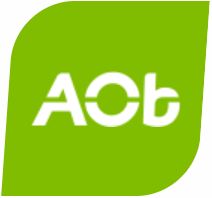Participation Act translated to collective labour agreements
Internal practice
Duration
Ongoing.
Reason it was developed
The Participation Act has been in force since 2015. With the Participation Act, the government wants to help more people with an illness or disability find work.
Activities
The aim of the act is to allow as many people as possible to participate in society and to offer people with an occupational disability a better prospect of a regular job. The job agreement is an elaboration of that. This means that employers are obliged to allow 2.35% of the number of paid hours to consist of people who are registered in the National Target Groups register. The social partners in education have included this agreement in the collective labor agreements. To make this more concrete for you, In the primary education, approximately 288 extra jobs should be created per year. By 2027, a total of 125,000 additional jobs (this target concerns all employers in the Netherlands) must be created for people who cannot earn the minimum wage without help. Primary and secondary schools do this both directly and indirectly. I will give some examples to show how schools take their responsibility. Direct deployment is by taking people from the job agreement into paid employment. This means that there must be or be created a suitable position within the school. These are often positions within facility services. They for example can hold a job wherein they help teachers with preparing classrooms by starting up the computers or taking care of the mail. Indirect deployment is when schools collaborate with companies from which they purchase products or services. They then agree that those companies will have the work performed by people from the job agreement. An example of this is when schools make an appointment with their suppliers who maintain the greenery around the school, in order to agree that someone with an occupational disability will participate in the team. Another great example is a school for special education that I recently visited. This school helped a former student get a job as a driver and then hired her for their own student transport. Unfortunately some schools find it very complicated to implement the job agreement. Not only do they have to create the job, they also have to arrange guidance and support in the workplace. The agreement is quite challenging, especially because the sector is struggling with major staff shortages. It requires schools to work well together in the region and to establish connections with other parties, such as companies and municipalities. There is certainly still much to be gained in this area. We do see the social importance of the job agreement, but it is still too little linked to the impact it can have on students when they learn what inclusion looks like at a young age. How the union can take a role in this awareness is still a quest for us.
Results
By 2027 in primary and secundary education, a total of 125,000 additional jobs must be created for people who cannot earn the minimum wage without help. Because employers in the government sector in particular did not achieve their targets for the Job Agreement, while the overall target was amply achieved, State Secretary of social affairs and employment indicated at the end of 2018 that she wants to simplify the Job Agreement Act. The simplification of the Job Agreement Act means that the quota scheme will be suspended until January 1, 2022. Employers who do not meet the interim targets of the job agreement will not have to pay a tax until 2022. In addition, the distinction between the government and the market disappears.